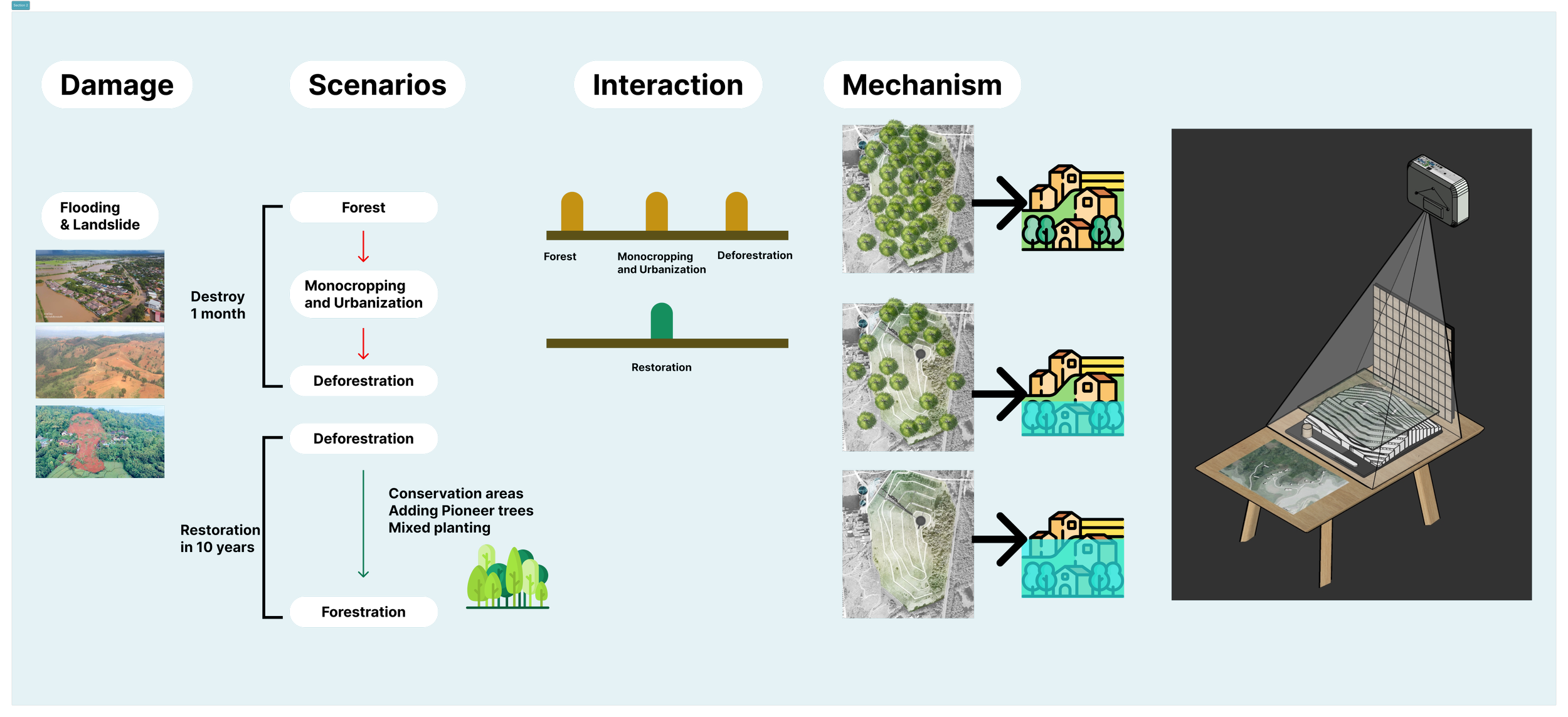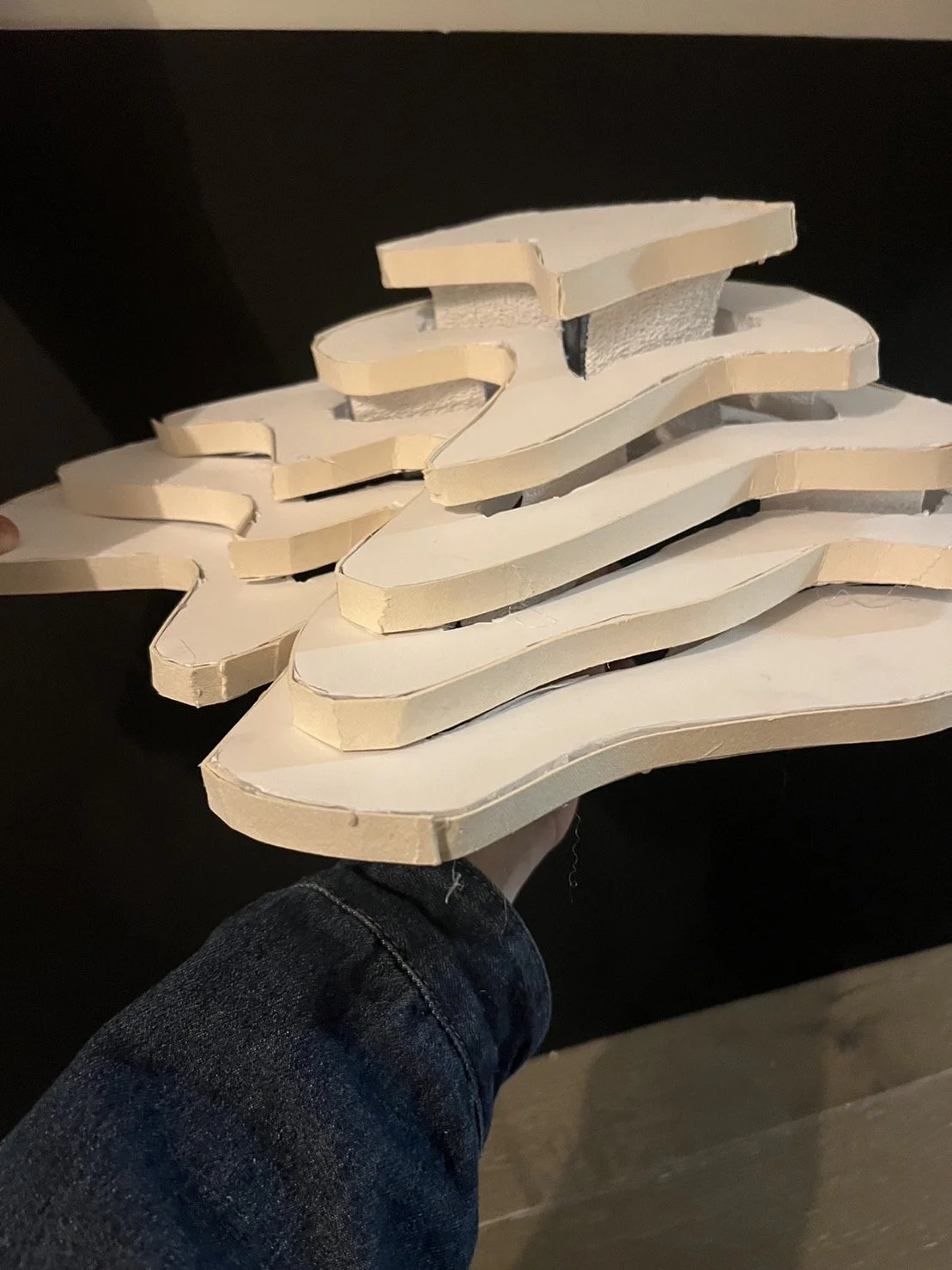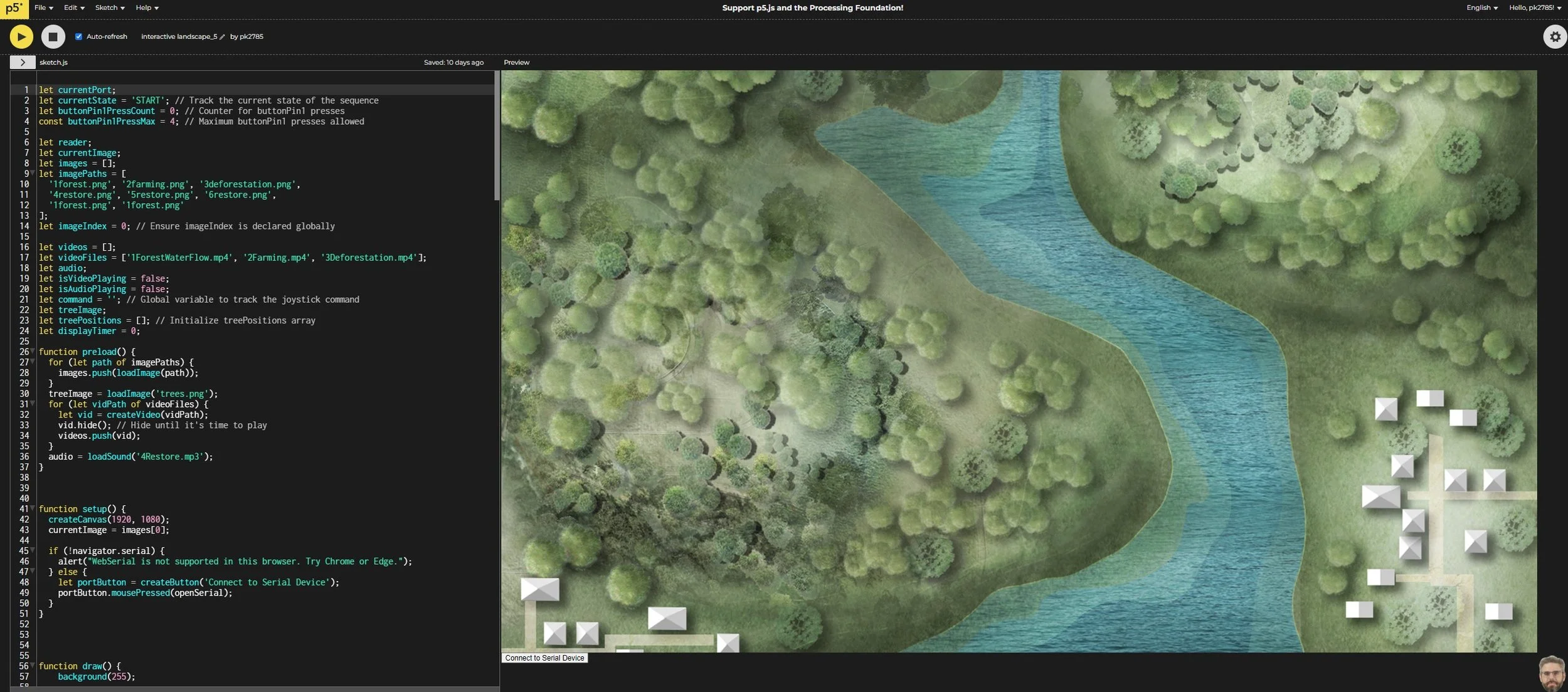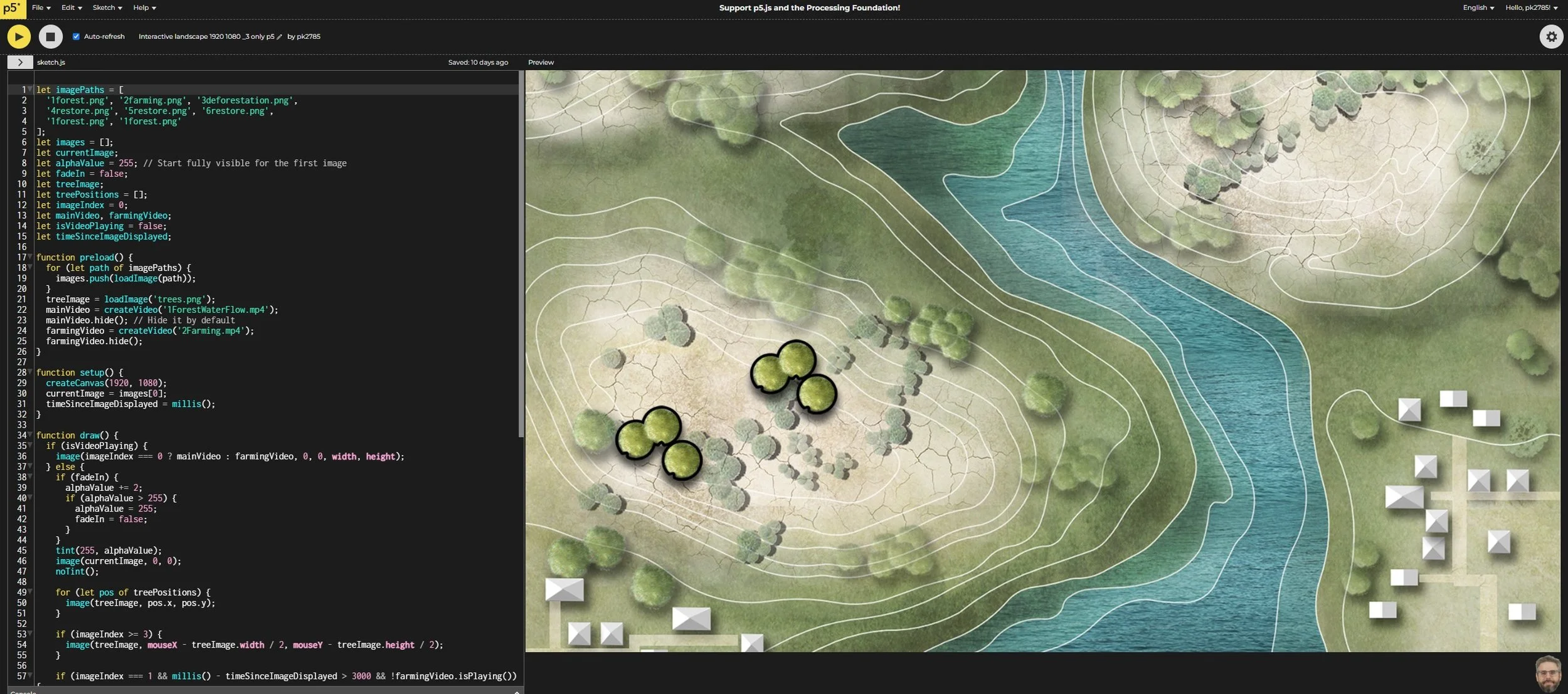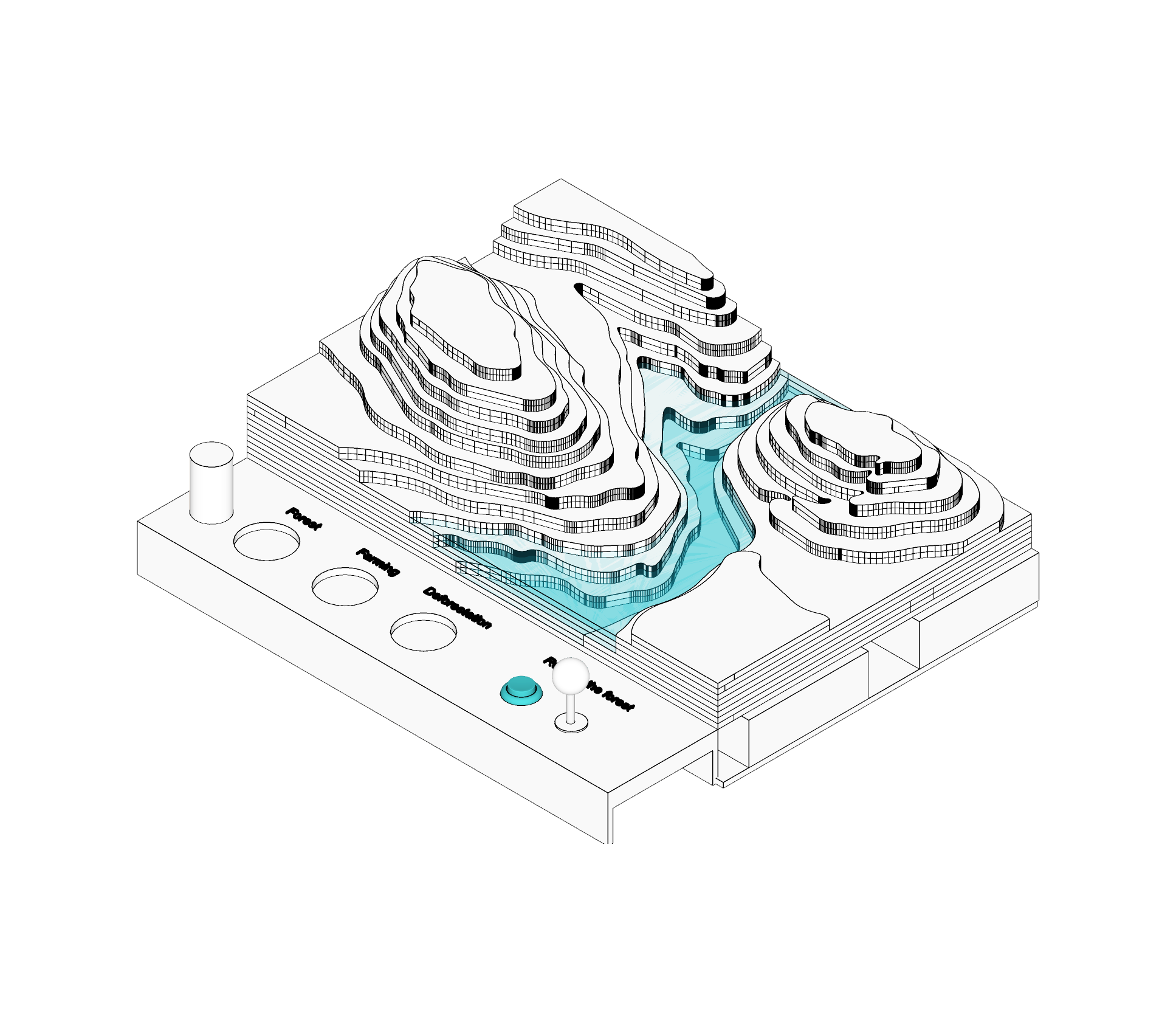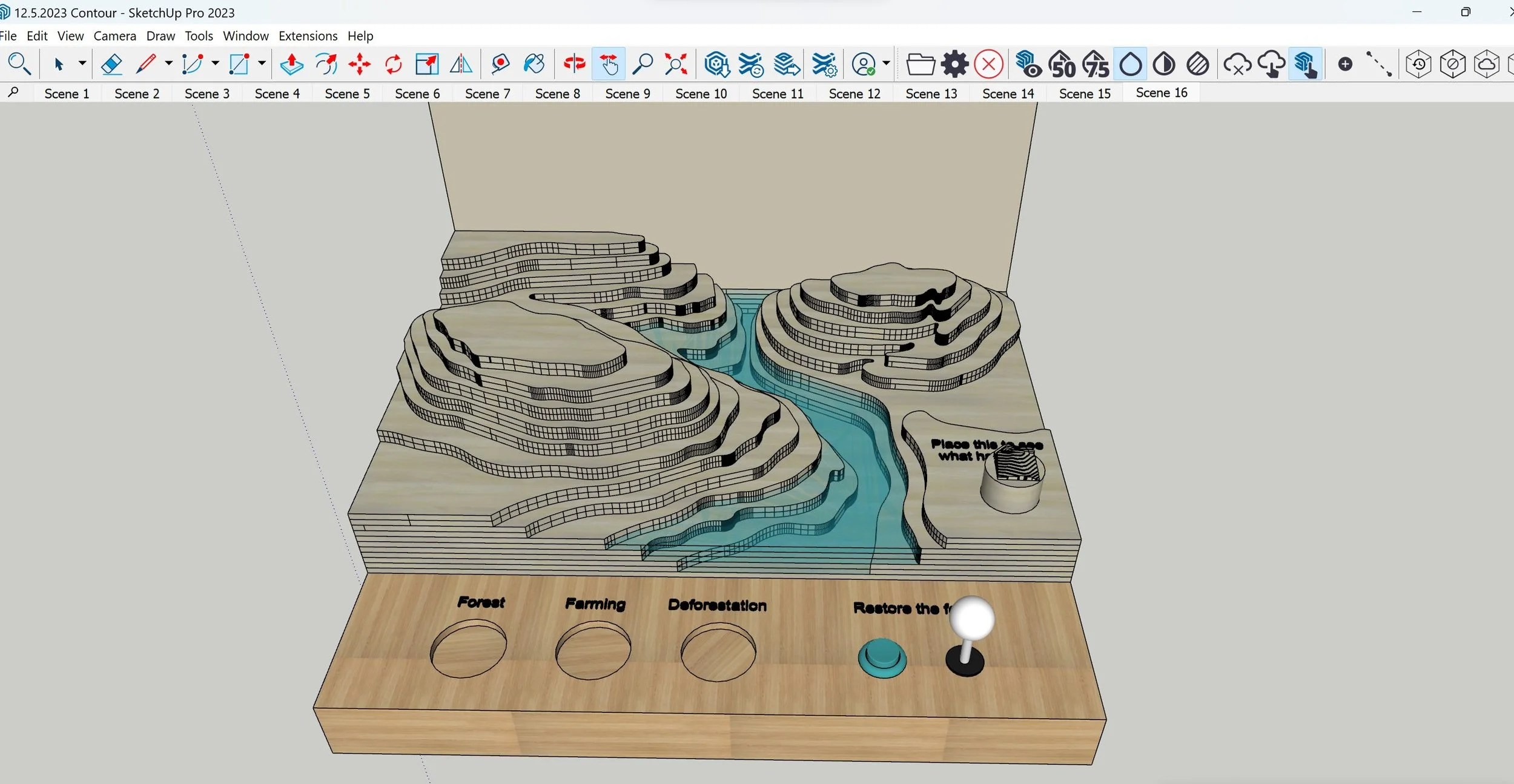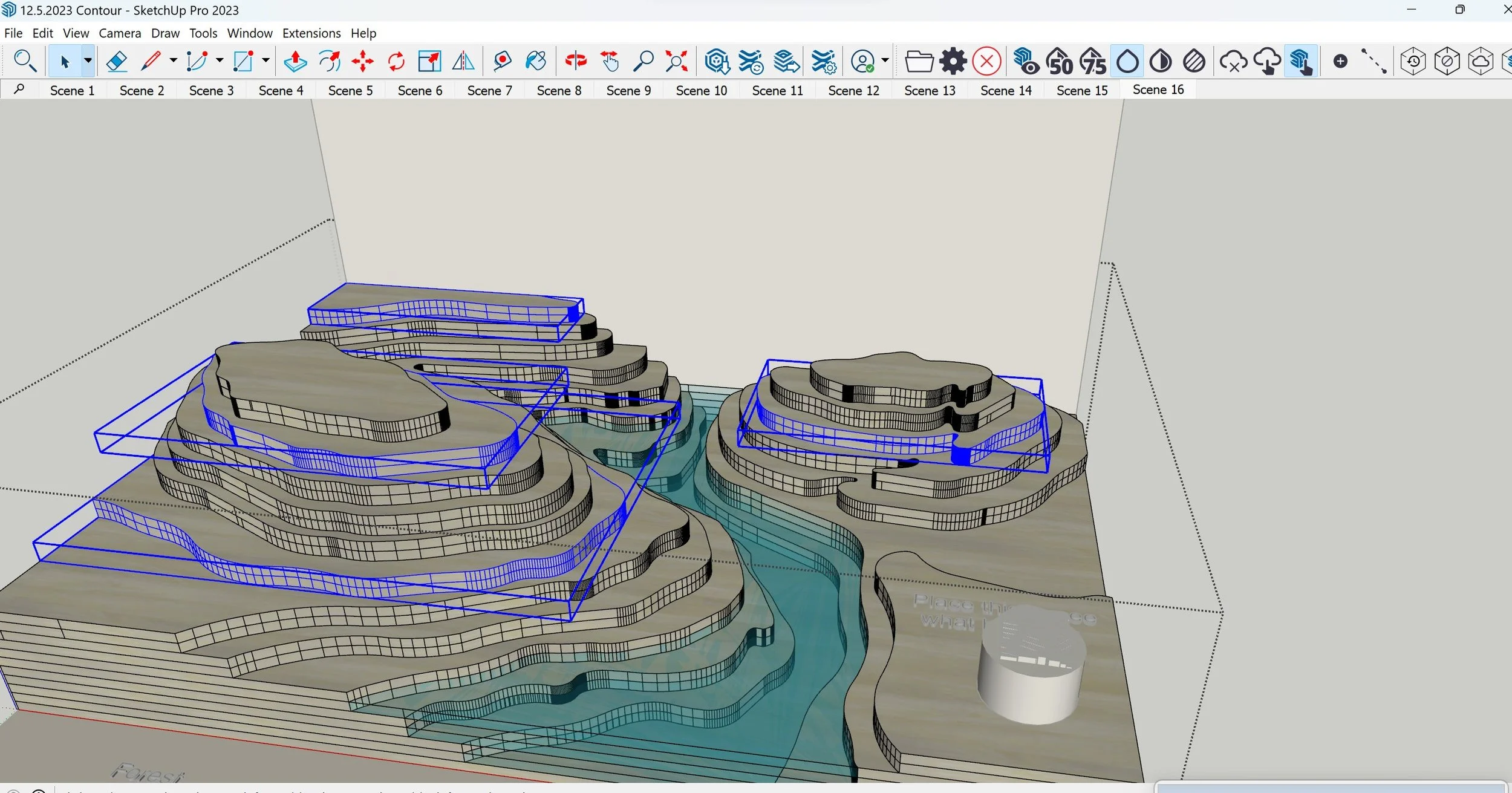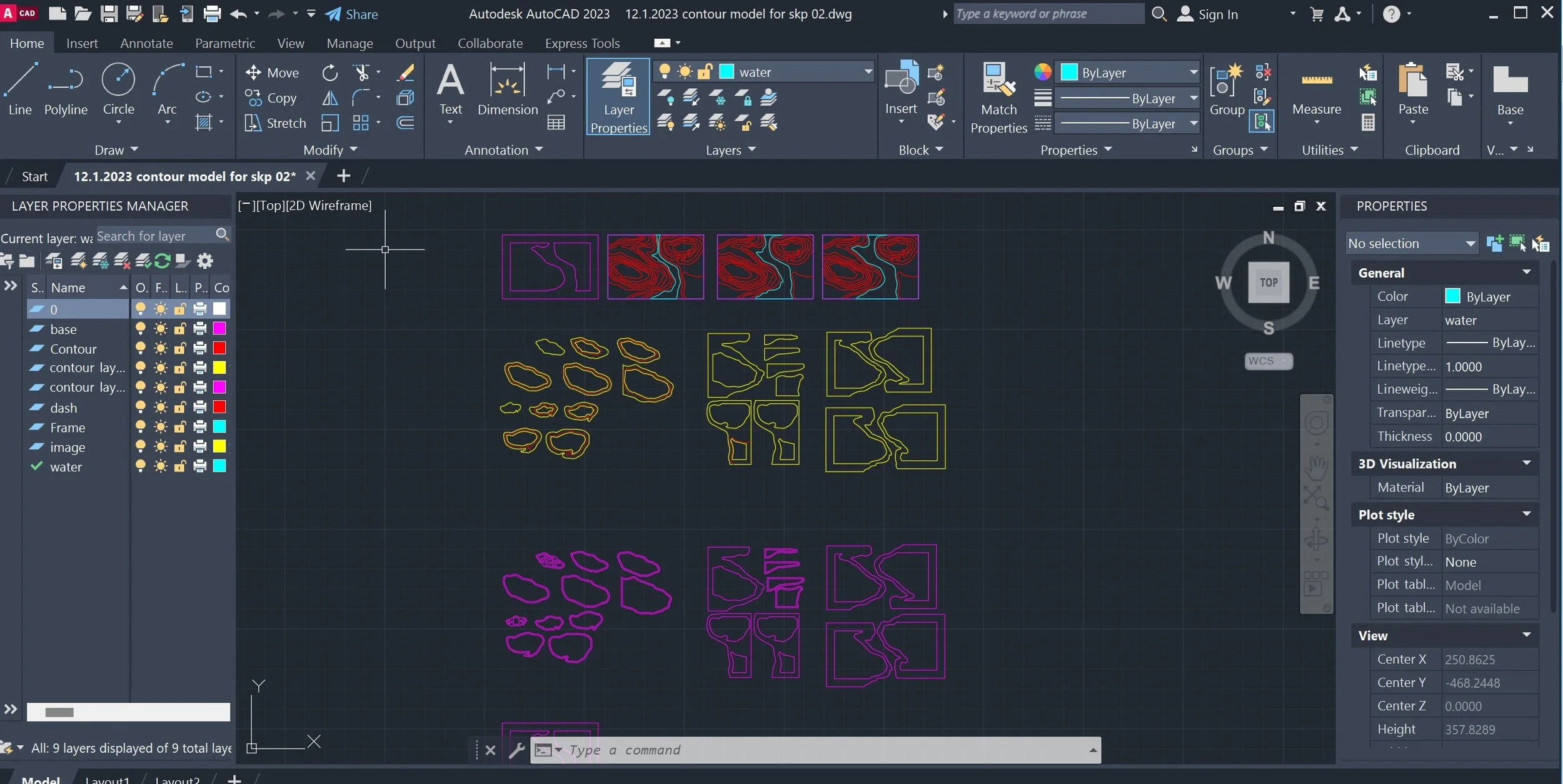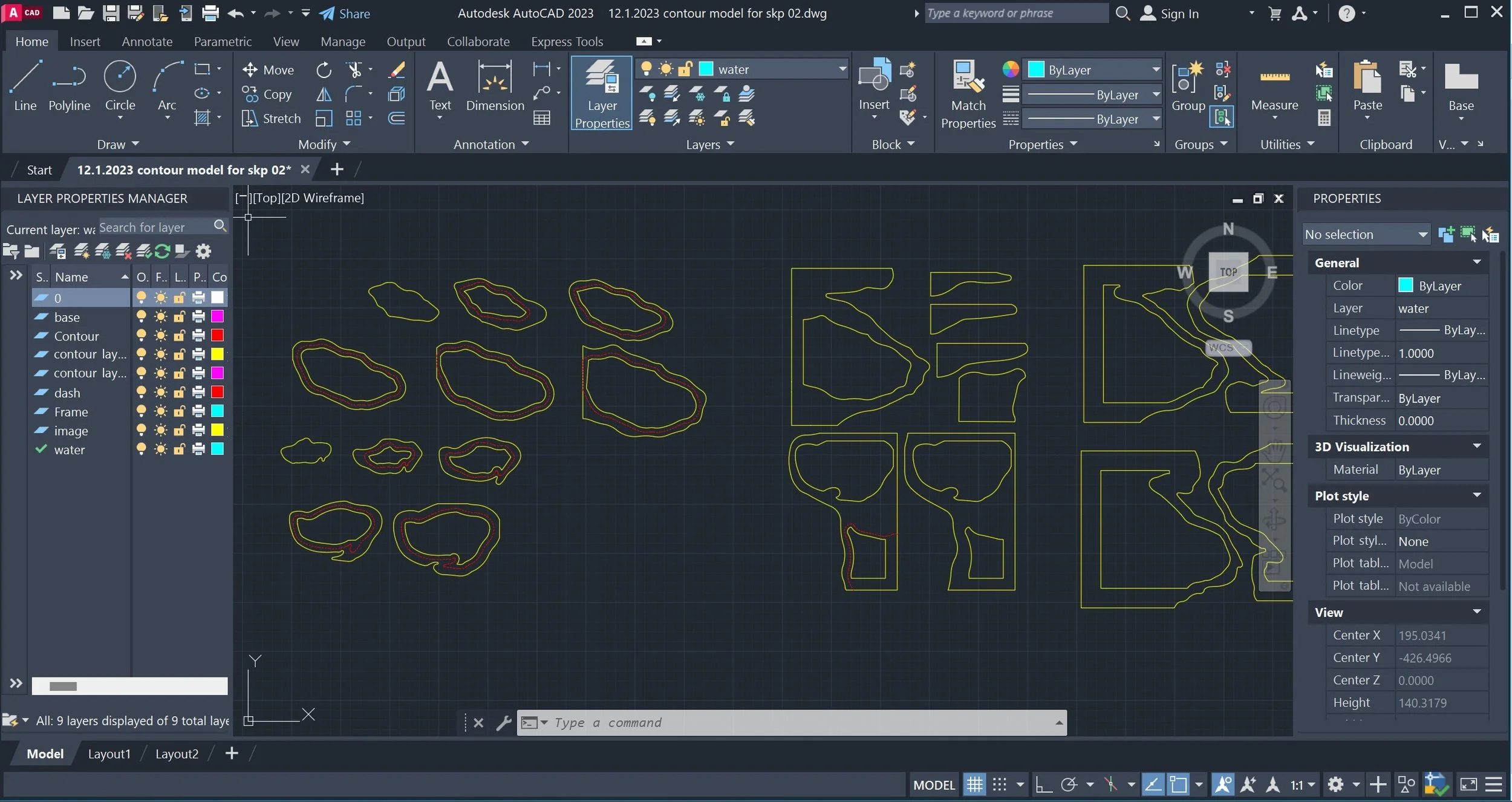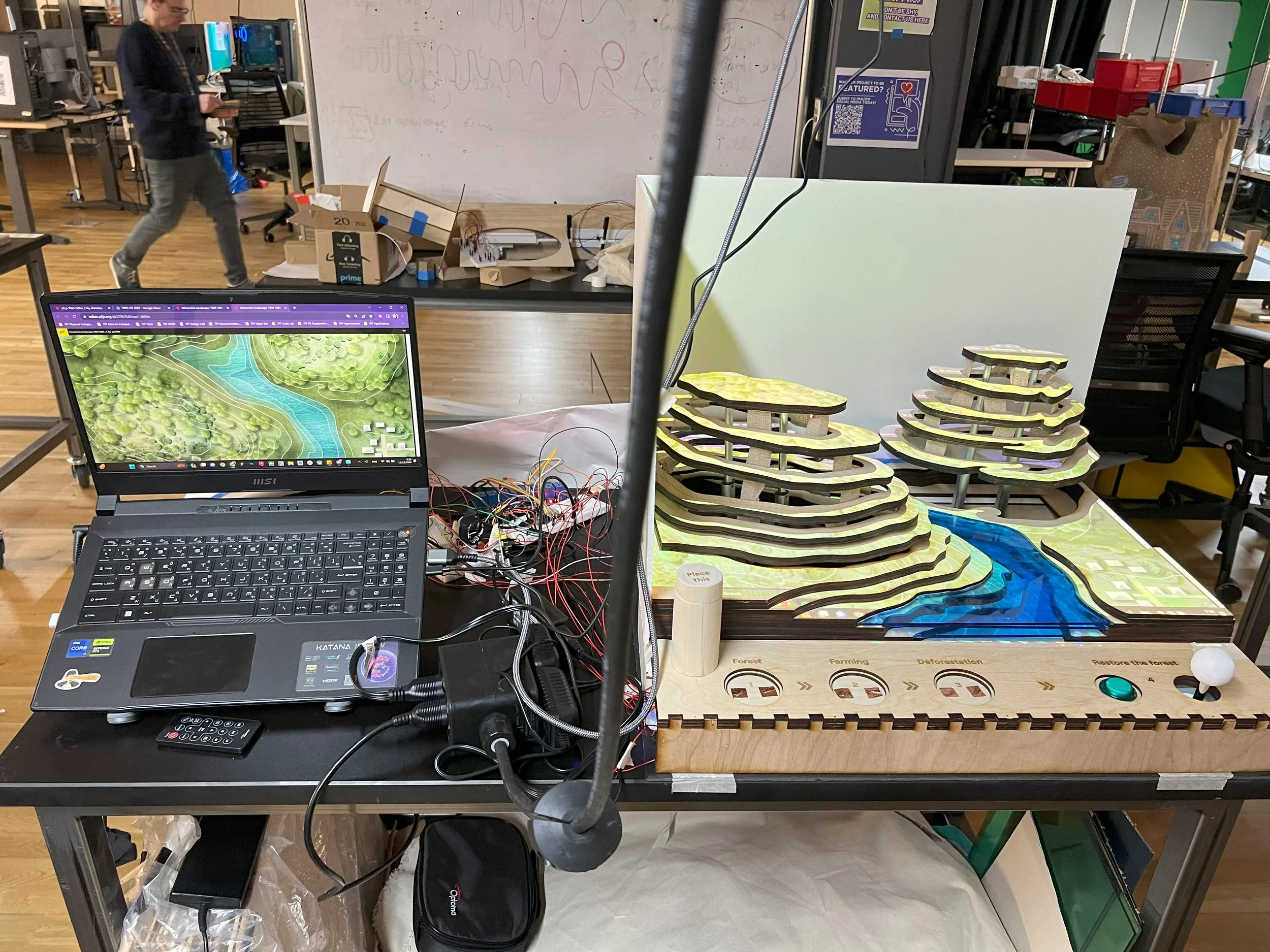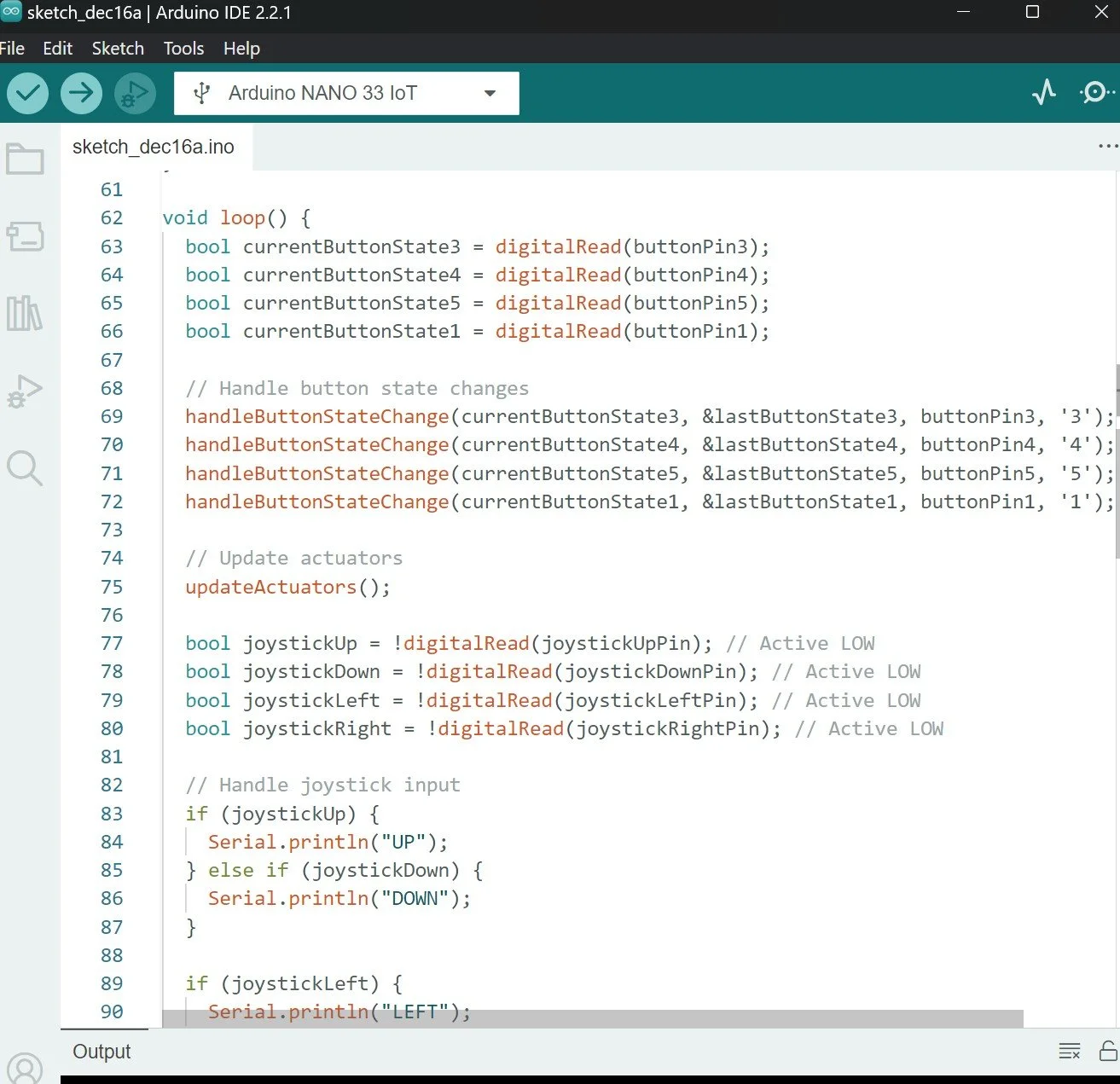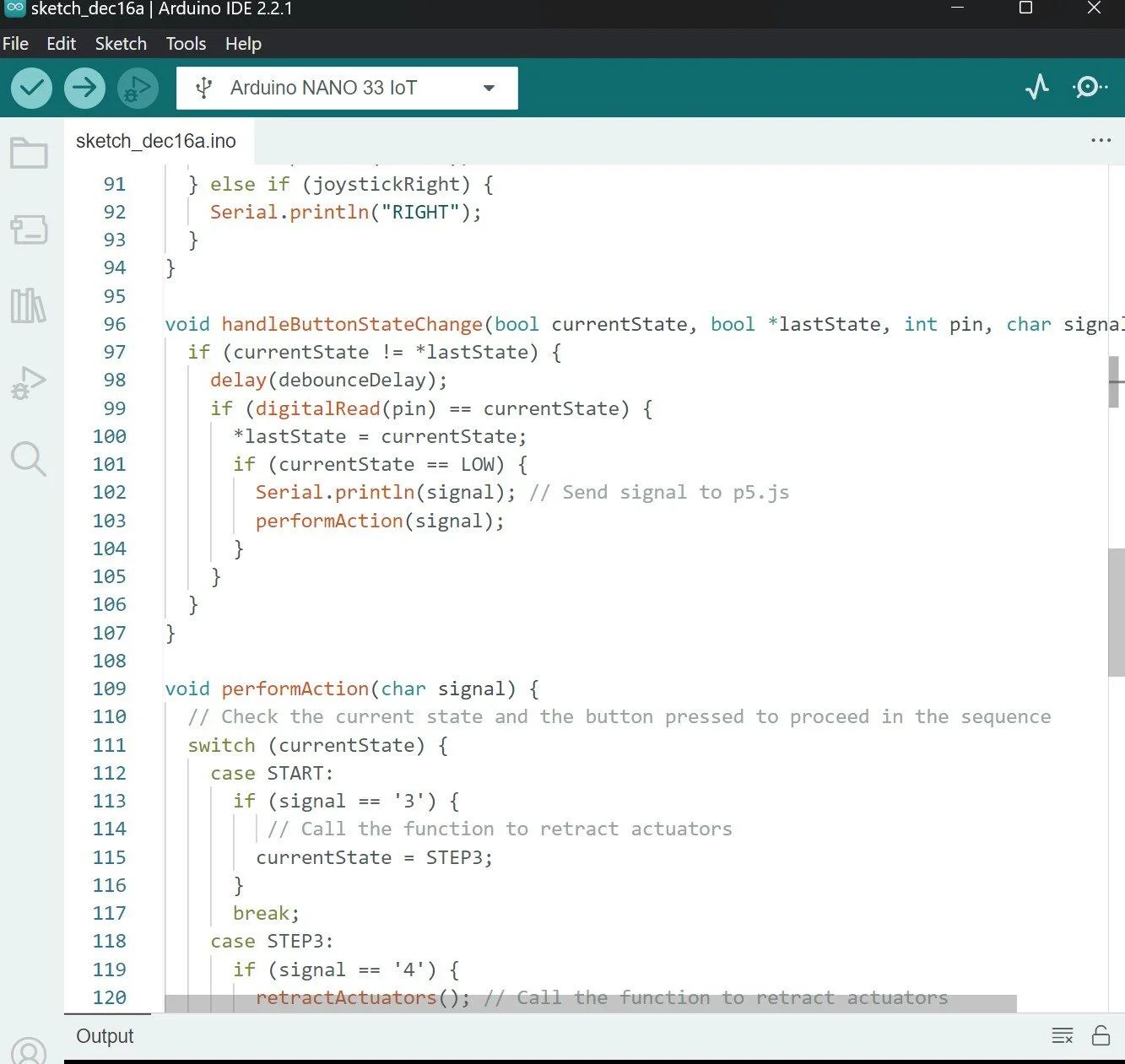
Final project - draft
Interactive Landscape
Objective
Create awareness about preserving mountain forests and the impacts of deforestation and monocropping. This project uses project mapping and landscape modeling techniques to visually demonstrate the consequences of these destructive practices on mountain ecosystems, including the increased risk of flooding and landslides.
Interaction
Users utilize a magnet sensor to select scenarios on a wooden model, with a projector illustrating biodiverse forests, monocropping, deforestation, and urbanization effects on an interactive landscape model. This facilitates understanding of ecological impacts and includes a digital tree-planting simulation to promote reforestation awareness. The setup educates about deforestation consequences and underscores the importance of sustainability in mountain ecosystems.
Interaction diagram
Paper prototype
Linear Actuators
Arduino and Actuators: The Movement of Nature At the core of this project lies the Arduino software, which I harnessed to control four linear actuators. These actuators are responsible for the dynamic movement of the topography model, moving up and down to simulate different environmental scenarios: an original forest, farming on mountains, deforestation, and the restoration of the forest.
P5 Javascript
Serial Communication and Interactive Display A critical aspect of this setup was establishing serial communication between P5 JavaScript and Arduino. This allowed me to display the scenarios with richly detailed visuals, which I created using Photoshop. The result? Each scenario comes alive with images and videos, engaging the viewer in a story of ecological change.
When users place a wooden cylinder on the control board, it triggers the P5 javascript to display their chosen scenario, accompanied by explanatory audio. This immersive experience makes learning about environmental impacts more engaging and accessible.
3D modeling in SketchUp
Fabrication
The fabrication journey began with hand-drawn contour lines inspired by the landscapes of Chiang Mai, Thailand. These initial sketches were then refined in AutoCAD for clarity and precision. The journey from concept to reality further evolved when these AutoCAD files were exported into Adobe Illustrator. This transition was a key moment, bridging the gap between digital design and physical creation. Finally, the designs were brought to life using a laser cutter to precisely cut the plywood.
Arduino
Arduino and Actuators: The Movement of Nature At the core of this project lies the Arduino software, which I harnessed to control four linear actuators. These actuators are responsible for the dynamic movement of the topography model, moving up and down to simulate different environmental scenarios: an original forest, farming on mountains, deforestation, and the restoration of the forest.
Harvey Gunjareug - Assistant in Coding and Debugging
